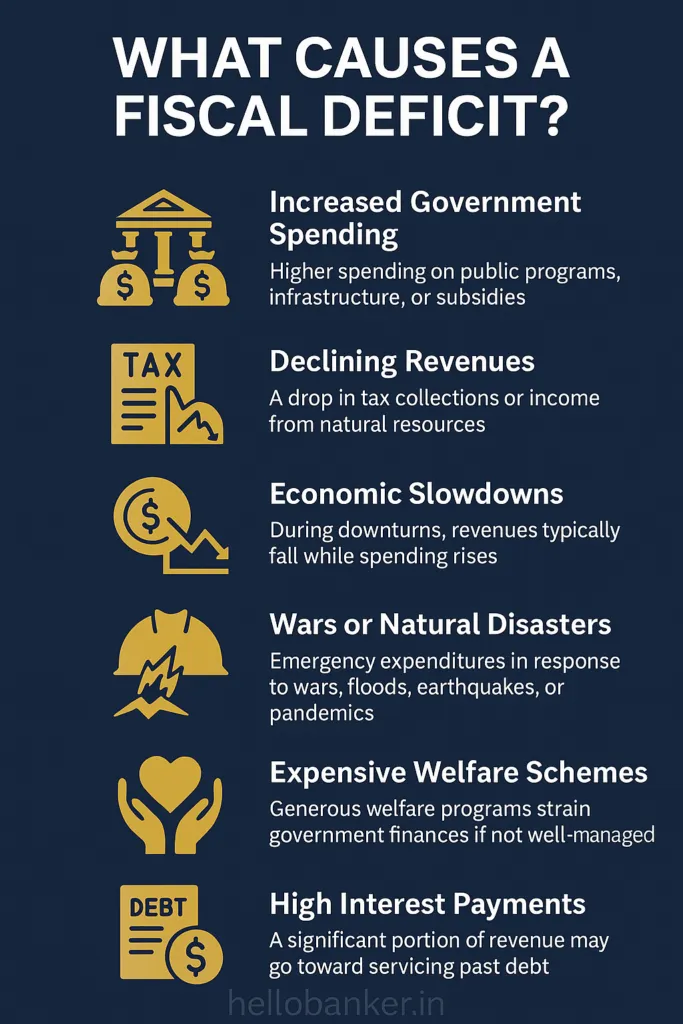FM Sitharaman in USA: India has maintained Fiscal Deficit despite COVID-19, Check Data Here

| ➡️ Get instant news updates on Whatsapp. Click here to join our Whatsapp Group. |
San Francisco, USA – Finance Minister Nirmala Sitharaman, while speaking to the Indian community in San Francisco, said that India is firmly sticking to its plan to reduce the fiscal deficit — the gap between the government’s income and spending.
She explained that during the Covid-19 pandemic, the government had to spend more to support people and the economy, which increased the fiscal deficit. But in 2021, the government made a clear plan to bring it down gradually. “We set yearly targets and promised to reduce the fiscal deficit to below 4.5% by 2026,” she said.
She assured the audience that the government has been following this plan every year without any delay.
The event was held with the support of the Consulate General of India in San Francisco and the Indian Embassy in the U.S. The Finance Minister’s message shows India’s strong commitment to managing its finances wisely and keeping the economy stable.
What is Fiscal Deficit?
A fiscal deficit occurs when a government’s total spending exceeds its total revenue in a given financial year, excluding borrowings. This shortfall is typically covered by borrowing money, increasing the government’s debt. In simpler terms, it’s when a government spends more than it earns from taxes and other sources.
India’s Fiscal Deficit Data: Last 10 Years
- 2013-14: 4.50%
- 2014-15: 4.10%
- 2015-16: 3.90%
- 2016-17: 3.50%
- 2017-18: 3.50%
- 2018-19: 3.40%
- 2019-20: 4.60%
- 2020-21: 9.20%
- 2021-22: 6.80%
- 2022-23: 6.40%
- 2023-24: 5.80%
- 2024-25 (Q1): 8.10%
Fiscal Deficit Overview
- 1947–1970s: Relatively modest fiscal deficits, reflecting cautious government spending.
- 1980s: Fiscal deficits increased due to rising expenditures, especially on subsidies and welfare programs.
- 1990s: High fiscal deficits triggered a balance of payments crisis, leading to major economic reforms.
- Late 1990s – Early 2000s: Improved fiscal discipline helped contain deficits within manageable limits.
- 2008 Global Financial Crisis: Stimulus packages and increased spending widened the fiscal deficit to counter the economic slowdown.
- Post-2008: Gradual efforts to reduce the fiscal deficit, though challenges like subsidies and low tax revenue remained.
- 2017: Introduction of the Goods and Services Tax (GST) aimed at enhancing government revenue collection.
- 2020 – COVID-19 Pandemic: Emergency spending to support the economy caused a sharp rise in the fiscal deficit.
Understanding Fiscal Deficit
- Definition:
Fiscal Deficit refers to the shortfall where the government’s total expenditure exceeds its total income (excluding borrowings). - Basic Formula:
Fiscal Deficit = Total Government Expenditure – Total Government Income - Detailed Formula:
Fiscal Deficit = (Revenue Expenditure + Capital Expenditure) – (Revenue Receipts + Capital Receipts excluding borrowings) - Rearranged Formula for clarity:
Fiscal Deficit = (Revenue Expenditure – Revenue Receipts) + Capital Expenditure – (Loan Recoveries + Other Receipts)
Example:
- Suppose:
- Total Expenditure = ₹500 crores
- Total Revenue = ₹400 crores
- Then,
Fiscal Deficit = ₹500 crores – ₹400 crores = ₹100 crores - Conclusion:
The government has a fiscal deficit of ₹100 crores in this scenario.
Important Note:
- A budget deficit is a concern for many economies, including India.
- However, a high fiscal deficit doesn’t always mean the economy is weak.
- If the government is spending on long-term assets like highways, airports, or industries, the deficit may be justified.
- Context matters—both revenue and expenditure sides must be studied before judging the fiscal deficit.
Reasons of Fiscal Deficit?

A fiscal deficit occurs when a government’s total spending exceeds its total revenue (excluding borrowings). Several key factors can contribute to this imbalance:
- Increased Government Spending:
Higher spending on public programs, infrastructure, or subsidies without a matching increase in revenue can widen the deficit. - Declining Revenues:
A drop in tax collections or income from natural resources can reduce government earnings, deepening the fiscal gap. - Economic Slowdowns or Recessions:
During downturns, revenues typically fall while spending on welfare and stimulus measures rises, increasing the deficit. - Wars or Natural Disasters:
Emergency expenditures in response to wars, floods, earthquakes, or pandemics can significantly inflate government spending. - Expensive Social Welfare Schemes:
Generous welfare programs—such as subsidies, pensions, or free services—can strain government finances if not well-managed. - High Interest Payments on Debt:
A significant portion of government revenue may go toward servicing past debt, leaving less for development and widening the deficit.

Please check list of the died persons after Covid injections
Deaths between 15-45 years
Now the Govt denied that we have not forced to anyone for taking injection
There is proof that the Govt has stopped to allowed to join duty without producing certificate of Covid injections
Ask them those families where only son sudden died after taking Covid
My wife, my sister, my Bhabhi three members left the world
Who will responsible